Members of the Police Department and the Sheriff’s Department shot and killed each other on the main drag of this resort town, in this crazy episode from the late -19th Century.
Hot Springs, Arkansas, is a resort town located in the Ouachita Mountains southwest of Little Rock, about an hour’s drive away. The first attraction to this area was, as the name implies, its hot springs. From the time humans first learned of these natural attractions, it has been a destination for visitors.
As Hot Springs continued to grow and be developed with the addition of lakes, hotels, resorts, horse racing, and other forms of gambling, the visitors spent a lot of money there. The more money they spent, the greater the town’s appetite grew for even more, and believe it or not, the temptation sometimes touched politics and politicians.
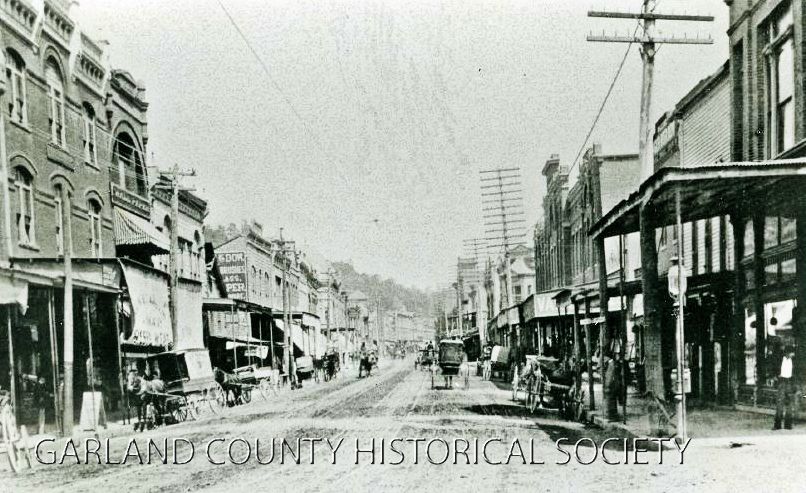
Given the political landscape in our country today, it should come as no surprise to anyone that political differences can erupt in violence, on the local, state and national level.
We just don’t expect that violence to erupt between two agencies charged with keeping the peace, protecting citizens and enforcing laws.
POLITICAL GAMES
After winning the 1897 citywide election, Mayor William L. Gordon appointed Thomas C. Toler as Chief of Police of Hot Springs. Toler had previously served several terms as Chief, but was ousted by the previous mayor, so he was happy to be back in office, under Mayor Gordon.
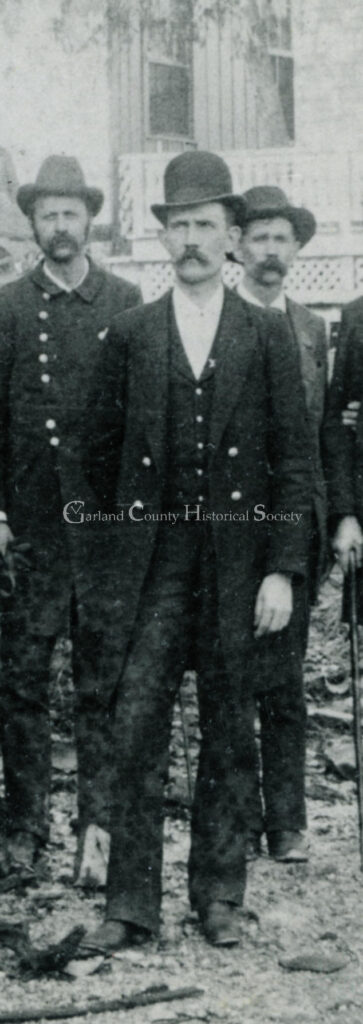
However, elections come around pretty quickly and that leaves politicians scrambling to keep their jobs. As the next election approached, Toler placed his support behind mayoral candidate C.W. Fry, in exchange for job security, since Mayor Gordon and Chief Toler were no longer getting along.
Mayor Gordon had the support of Garland County, Arkansas, Sheriff R.L. (Bob) Williams in this election, partly because Gordon had offered the Chief of Police position to Sheriff Williams’ brother, John “Coffee” Williams, who was currently serving as chief deputy of Garland County.
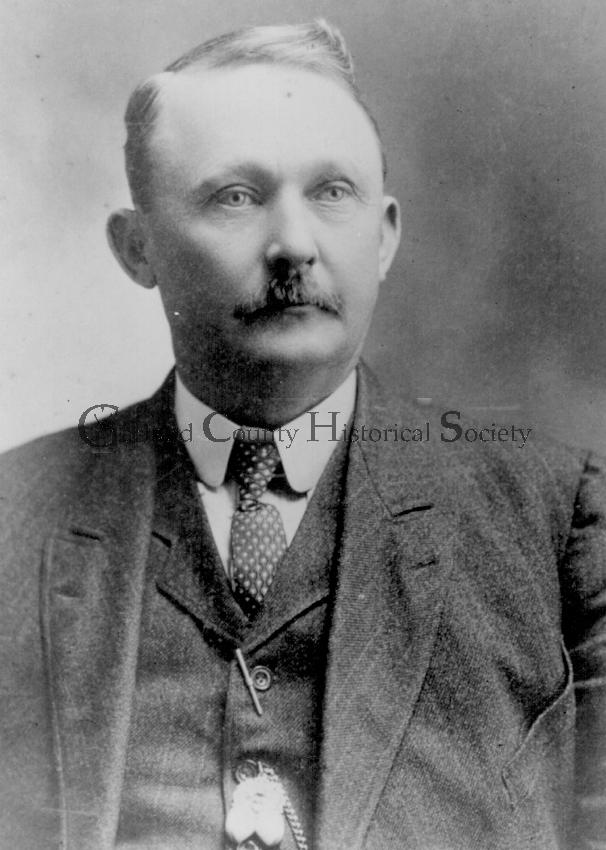
A CONFRONTATION
On March 16, 1899, mayoral candidate Fry spoke at a political meeting in the city, where some Hot Springs police officers told the crowd that Chief Toler was now supporting Fry in the election. News of this angered Sheriff Williams, who met with his friend, Dave Young, to discuss the meeting and the involvement of the police department in the campaign.
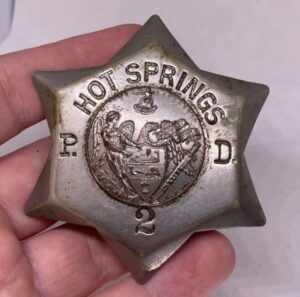
Their meeting took place in a saloon, and when Sheriff Williams and Dave Young left the establishment, they ran into Hot Springs Police Sergeant, Thomas Goslee. Sheriff Williams called Sgt. Goslee over, and began to accuse him and his fellow officers of various offenses, in connection with their support of Fry. He also reportedly called Goslee a liar and a coward.
As the conversation grew heated, the Sheriff thrust his hand inside his coat, as if reaching for a weapon, and Sgt. Goslee responded by drawing a two-shot derringer, having left his service revolver in his desk at City Hall. Before the moment escalated, Dave Young was able to calm both men down.
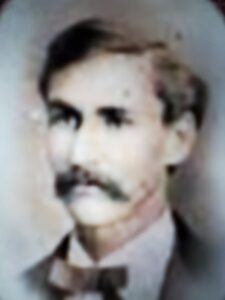
As Goslee began to leave, Sheriff Williams called to his son, Johnny, who was nearby. Johnny provided his father with a .44 caliber, short barrel revolver, and drew his other revolver. Folks have argued since that day about who fired first. Common sense and logic tell us that a man with a two-shot derringer (probably a Remington Stackbarrel in .41 rimfire) would have enough brains not to start a gunfight with two fellows armed with six shooters, so it’s unlikely Goslee started the shooting.
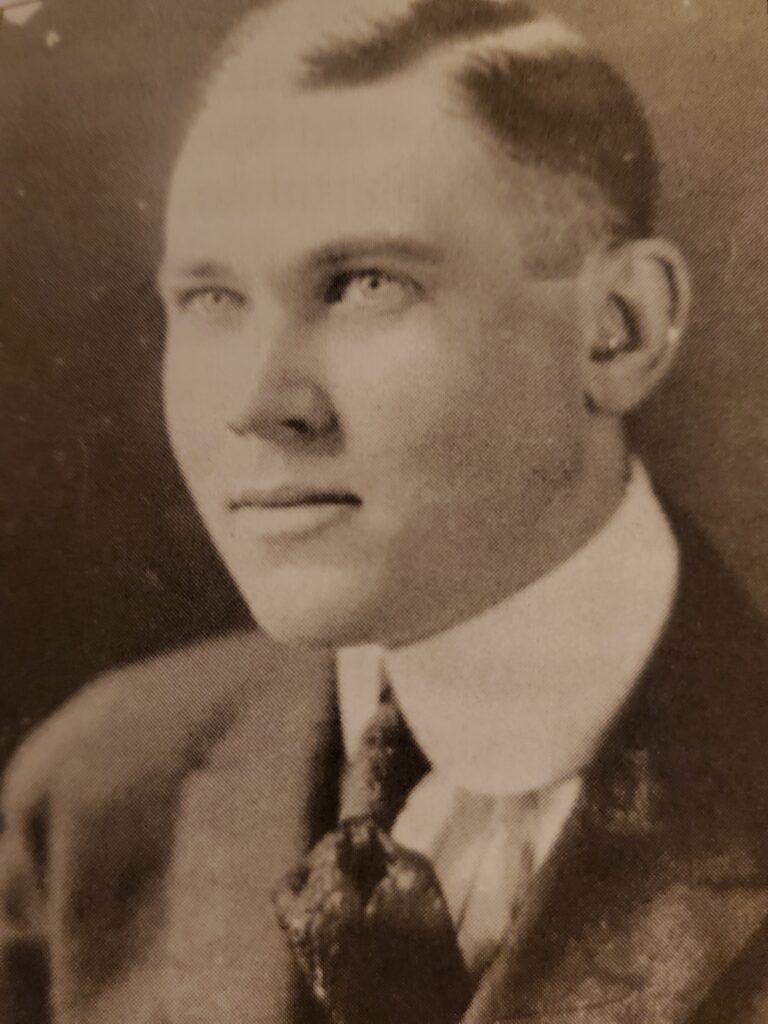
Sheriff Williams and Johnny Williams emptied their revolvers at Goslee, without making a hit, and Goslee sent his two shots their way also, with no strikes. Goslee then retreated.
NEGOTIATIONS
An open gunfight on the streets of a resort town is not good for the tourism business. Soon, town leaders were calling for peace, and to stop the gunfire.
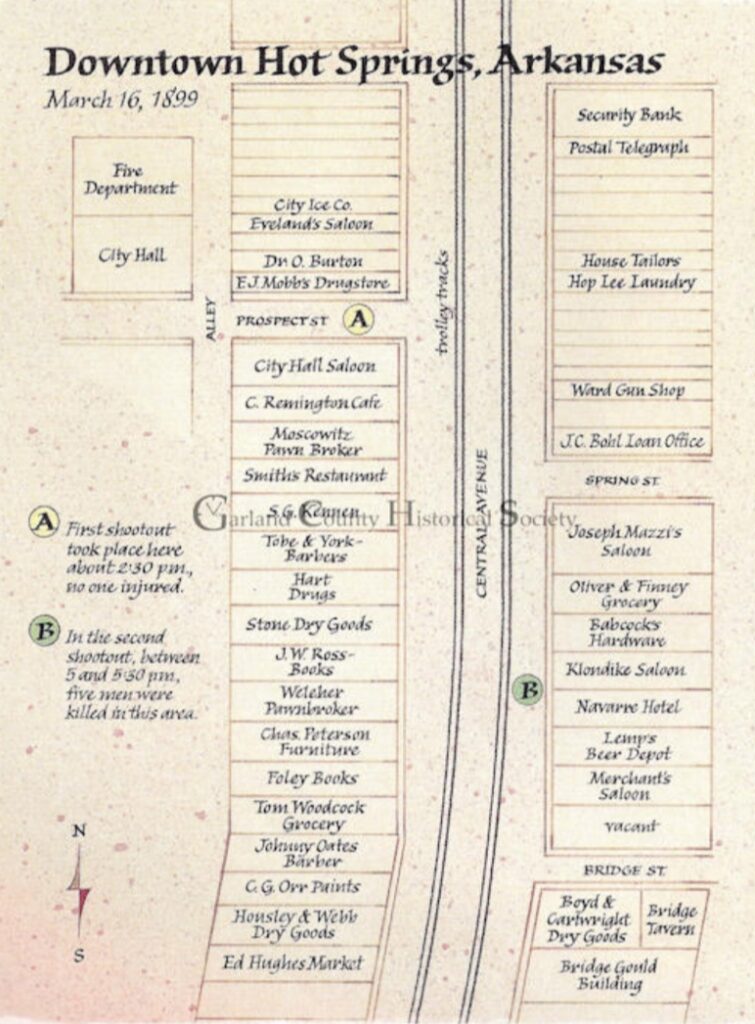
The Chief and Sergeant Goslee reached out to Sheriff Williams and Johnny Williams, respectively, with no results. After a meeting, Chief Toler, Hot Springs Police Department Captain Lee Haley, and Sergeant Goslee began walking south on Central Avenue. Coming from the other direction was Johnny Williams, his uncle Chief Deputy Sheriff Coffee Williams, and Deputy Sheriff Ed Spear. The two trios stopped at Lemp’s Beer Depot, where some banter and handshakes were exchanged, as the group stood in front of the sidewalk bar.
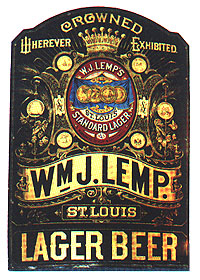
HOSTILITIES RESUME
The bartender at Lemp’s was Lewis Hinkle, a brother-in- law to Captain Haley. As the men talked, Haley suddenly called into question some threats the Williams family had allegedly made against him. That started the unraveling of the temporary peace.
Hinkle reached for Spear and cut the Deputy’s neck. Spear jerked away and drew his revolver, firing a round into Hinkle’s neck. Chief Deputy Coffee Williams also fired on Hinkle, striking him in the chest, and Hinkle fell dead.
Sergeant Goslee waded into the fight with his gun in hand, and was shot in the left leg and groin by Johnny Williams. When Goslee fell, he fired at Johnny and struck him in the head. Coffee Williams then dispatched Goslee.
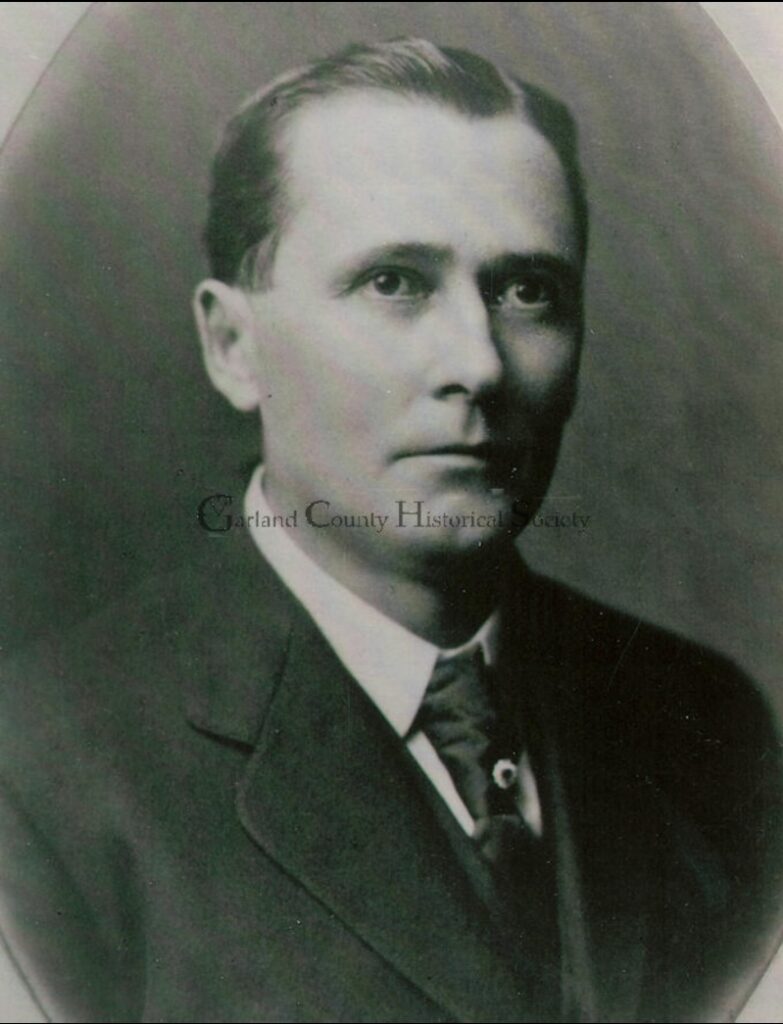
Captain Haley had helped to start the fight, but had not taken part in the fun. He took no action to help his fellow officers.
Chief Toler fired one shot at Coffee Williams, but missed. He and Coffee both sought cover by an express wagon. A shot from behind barely missed the Chief’s head, and he turned to see the wounded Spear approaching. Chief Toler fired at him and missed (his errant round struck a young man further down the street, who later recovered from the wound).
The Chief removed his secondary weapon, a .32 caliber revolver. With it, he missed another shot at Spear. Coffee Williams continued to fire at the Chief, and when Toler turned towards Williams to return fire, he was struck in the head by a bullet from Williams’ gun, and then in the body by another bullet from Spears’ revolver. Toler fell dead on the sidewalk, as his wife, who witnessed part of the incident from her window, approached.
SECOND PHASE
At that point, there was a lull in the firing. Spear, who was seriously wounded, with considerable blood loss, staggered into a saloon and collapsed. He later recovered from his wounds.
Coffee Williams still stood on the sidewalk, grasping his two revolvers. As he checked on his nephew, and tried to persuade a bystander to go get him more ammunition, he saw his brother, Sheriff Williams, coming up the sidewalk. With him were two of the Sheriff’s nephews, Sam and Will Watt, and Special Deputy Dave Young. They passed three bodies–Hinkle, Goslee, and Toler–on their way to check on Johnny.
Crying out in anguish, Sheriff Williams picked up his son’s revolver and pulled his own bone handled, “Navy” .45.
Detective James E. Hart of the Hot Springs Police Department had been at the nearby railroad depot, and responded to the gunfire. As he came up the sidewalk to the scene, pushing through the gathering crowd, he saw the bodies of his Chief and Sergeant Goslee.
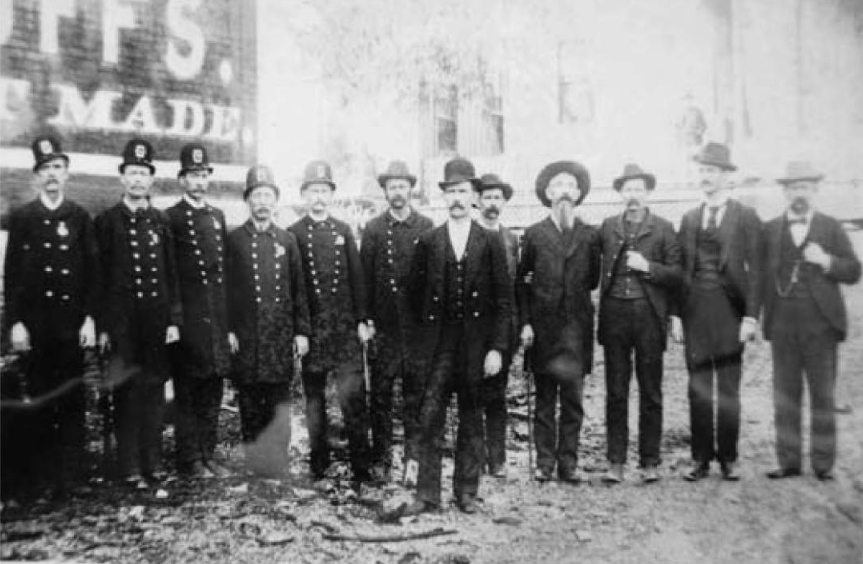
Sheriff Williams, having put one of his two guns away, pushed through the crowd, grabbed Hart’s uniform lapel, and shot him twice in the face at point blank range. Then the Sheriff’s nephew, Will Watt, added his own contribution, reaching over his uncle and firing two more shots into Detective Hart.
The gun battle was over.
Sheriff Williams borrowed a buggy and took his son home, where he passed away. The other bodies remained where they lay for a time. Constable Sam Adams and his Deputy, Jack Archer, arrived at the scene and took control. They directed the removal of the bodies.
AFTERMATH
At the coroner’s hearing on March 17, six men were charged with first degree murder: Sheriff Williams; Chief Deputy Sheriff Williams; Ed Spear; Dave Young, and; The Watt brothers, Will and Sam.
After it was determined that Sam Watt and Dave Young had not taken any part in the exchange of gunfire, the charges against them were dismissed. At the trials, none of the other defendants were convicted. The four were found not guilty, and released.
The shooting of Detective Hart should have been a no-brainer for the court. It was a cold-blooded murder. I imagine that even Sheriff Williams and Will Watt were amazed that they were not convicted. Remember though, if politics are strong enough to start a gunfight between two law enforcement agencies, they are strong enough to prevent punishment of guilty parties.
Detective Hart had previously served as Chief of the Hot Springs Police Department, but had been demoted during one of the previous political upheavals, by a new mayor. Hart left behind a blind wife and three small children. His wife filed a law suit for his death, but it was unsuccessful.
The wild gunfight on the streets of the popular resort started a mass exodus of tourists. That kind of press can turn off the revenue stream from visitors in a hurry.1
FATES
“Live by the Gun, Die by the Gun.” This is the modern version of Jesus’ counsel to his disciple, Peter, when Peter used his sword to defend Jesus during his arrest in the garden of Gethsemane. Violent behavior oftentimes returns violence.
Of the survivors of the gunfight, several perished by gunfire. Will Watt seemed to be heavily burdened after the shootings. He came close to drowning in the Ouachita River and later attempted suicide with medicine. While at home on the 28th of December 1906, he laid down on his bed and shot himself in the chest with his .45 revolver. This time the suicide attempt was successful.
His uncle, J.C. “Coffee” Williams, Chief Deputy Sheriff of Garland County at the time of the shootout, tried numerous business ventures after the gunfight, but all seemed to fail. He and his brother Bob invested in silver mines and slot machine operations in Mexico, just in time for the Revolution to wipe the investments out. In September of 1913, he was at home in his apartment on Exchange Street with his wife Annie. The couple had recently sold their home to pay for some debts. Coffee Williams told his wife he was a failure and that he was going to end it. She tried to remove a gun from his hand but he managed to fire a fatal shot into his chest.
Two suicides were an enormous weight for the Williams family to bear. They were not to be the last.
Bob Williams, Sheriff of Garland County for nine terms, was involved in other gunfights. Some of his business ventures were successful, but others were not. In August 1917, Williams fatally shot himself in the head.
Two men who had some involvement in the second fight at Lemp’s Beer Depot, Sam Watt and Ed Spear, both died of natural causes. Sam Watt passed away on the 28th of September, 1942.
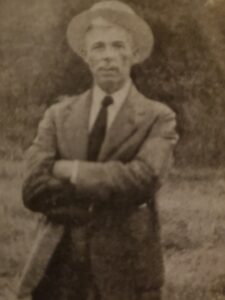
Ed Spear, whose throat was slashed by Lewis Hinkle, the bartender, survived his wound. Spear was involved in back room gambling and con games. He served time in federal prison in Atlanta. Spear got into a verbal altercation with a man named Bates in 1936, in downtown Hot Springs. Two city police officers, Captain Arch Cooper and Officer Ben Rogers, were watching when Spear grabbed Captain Cooper’s revolver from his holster and shot and killed Bates. A handgun was found under Bates’ body so Spear was not indicted. Spear passed away on September 11, 1950.
YOUNG’S FATE
Deputy Sheriff Dave Young, of Garland County, tried to stop the first gunfight between Sheriff Williams, his son Johnny Williams, and Sergeant Thomas Goslee. Young also arrived at the second shootout, later that day, just in time to see Detective Hart shot and killed. Young fired no shots in either confrontation.
After the gun battle in March 1899, Dave Young worked numerous jobs in bars and saloons. In 1891 he and two other men were charged with murder. The prosecution witness, whose testimony led to the charges, recanted during the trial, and charges were dismissed.
After that, Young worked in law enforcement again as a deputy sheriff, a deputy constable, and a Hot Springs police officer. In 1915, Young opened a private detective agency while maintaining a special deputy sheriff commission.
Young entered the race in 1918 for the constable’s office. By that time, his business was booming, so he took on a business partner–his friend and drinking partner, I. Green Brown. Brown had also been in law enforcement in Hot Springs as a deputy sheriff, and on the city’s police force. The partners were good friends, but as alcohol often does, it led to some fierce disagreements between them. One led to death.
On the evening of April 14, 1918, an argument broke out over a shoplifting case they were working. Guns were drawn in their office, but no shots were fired. They settled down and agreed to break up the ownership of the detective agency. Young made Green an offer, he accepted, and Young paid him with a check.
The two traveled to a bordello to interview one of the girls there, in regard to the final case. As they did so, the disagreement flared up again, and they left the establishment to continue their argument on the sidewalk. Young drew his revolver, and Green did the same. Young fired two times, striking Green in the lung and the arm. The weapon was a small caliber and did not stop Green, who then fired a shot from his .45 caliber revolver. The group of shots he fired at Young all hit in a tight group near Young’s heart. One of the shots struck Young’s Special Deputy badge and bent it.
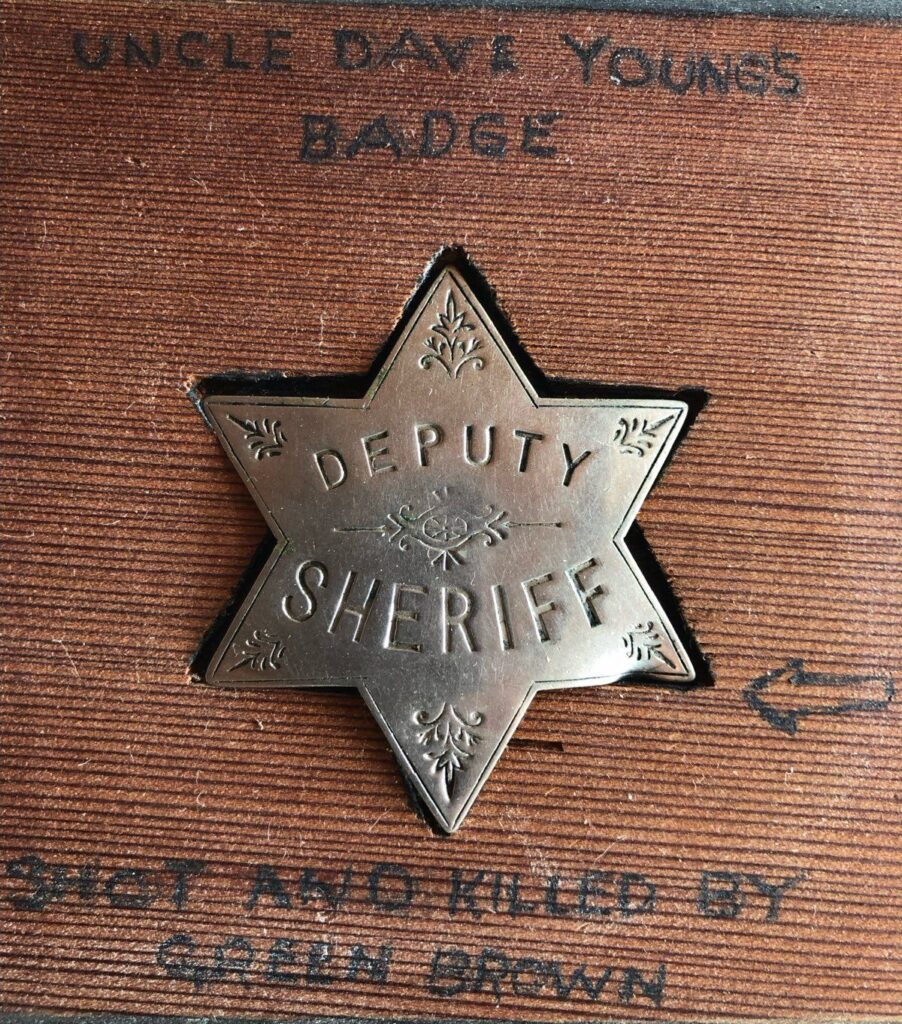
As Young fell mortally wounded, Green fired one more round that struck a 14-year-old boy. Both Green and the boy were taken to the hospital and survived. Green was not charged and the shooting was ruled self defense.
PRESENT DAY PERSPECTIVES
To label the Hot Springs shootout as very unusual would be an understatement. It’s unthinkable that leaders and members of the two agencies charged with enforcing the law and keeping the peace would shoot and kill each other. Political differences and the quest for riches that politics generate can be very powerful. There have been many deaths attributed to politics in history throughout the ages and I imagine we will see others in the future.
Fortunately, Hot Springs remains a popular tourist destination today, and the city and county are blessed to have two professional law enforcement agencies in place.
Stay Alert always and be safe.
*****
ENDNOTES
1.) Hot Springs had some interesting guests, before the March 16, 1899 gunfight. The March 17, 1899 issue of the Arkansas Democrat stated that approximately twelve years before, Toler had run Wyatt Earp out of Hot Springs. Another noted western gunman who visited Hot Springs frequently was William Barclay Masterson, known as Bat. He began his visits to Hot Springs around 1878, when he was serving as sheriff of Ford County, Kansas (the county seat was Dodge City). Masterson’s visits continued for many years before he passed away.
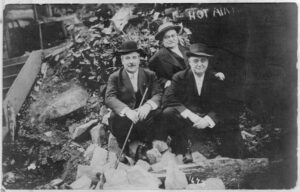
AUTHOR’S TRIBUTE AND CREDITS
As so many crime stories are, this is a very strange and unbelievable event. You may have read accounts of this online or in print, because when it was first brought to light in recent times, it spread like wildfire.
The person who brought this old story back to life was Hot Springs historian Orvall E. Allbritton, who passed away on January 8, 2023. During his early working career, he served as a statistical clerk for the F.B.I. for eleven years. He then returned to Hot Springs and spent the rest of his years as an insurance adjuster. He had a deep interest in the history of his home town. That led to him authoring many articles and five books, many of them covering the crime history of Hot Springs in days gone by. Mr. Allbritton’s books are available through internet sales and the Garland County Historical Society.
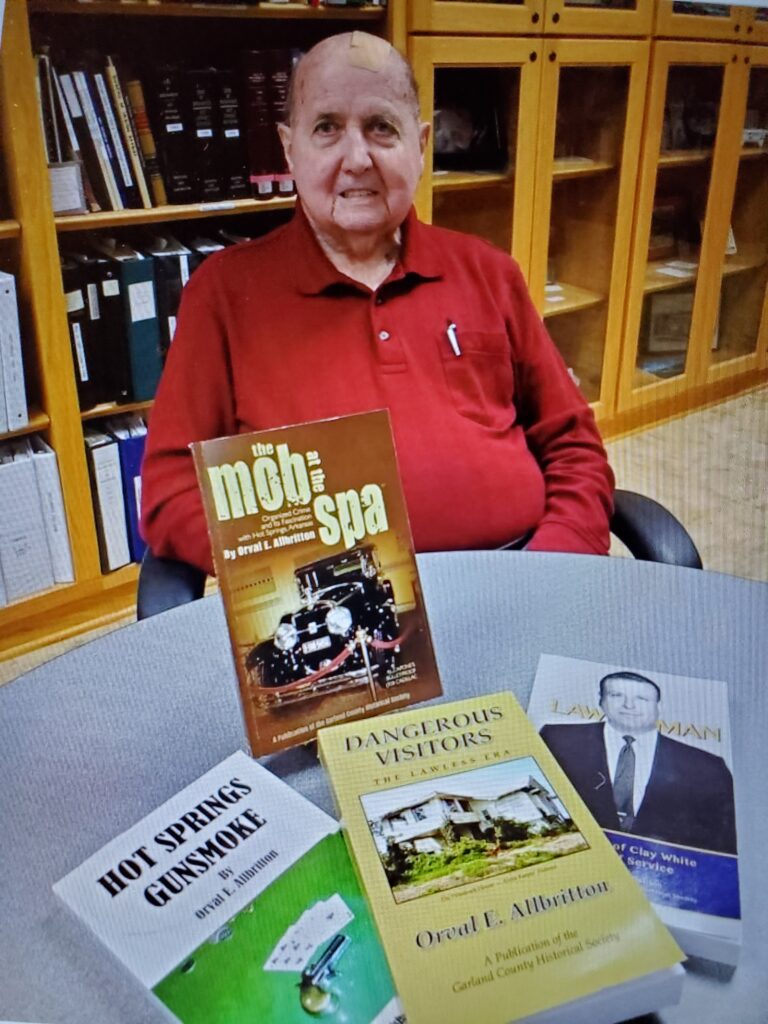
I met Mr. Allbritton when we were both invited to have lunch with noted British journalist and author Tom Mangold, who was working on a book about crime in Hot Springs. It was an interesting conversation.
This telling of the Hot Springs shootout is dedicated to the memory and work of Orval Allbritton.
We should also thank the Garland County Historical Society and the City of Hot Springs for not sweeping their crime history under the rug, but instead, embracing it as a historical attraction. Many communities in our country today think they can erase history by removing remnants such as statues, memorials and books. A knowledge of history is vital to ensure that we never make the same mistake again.

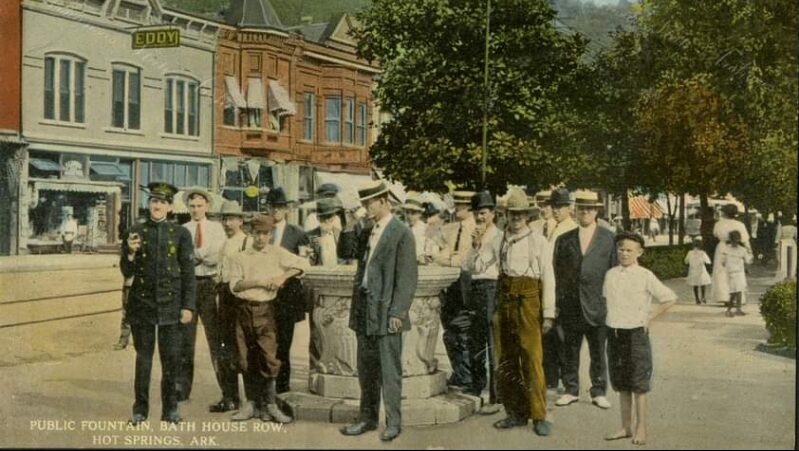
Outstanding article Sir! This history is so interesting, thank you for bringing this story to us. I live in NM, and anytime I am driving through the state, I can’t help but think about the stories like this one that some small town might have to tell. Its truly fascinating.
Excellent read, Tony. Agree that villainy in public institutions is ageless and will continue as long as we bipeds walk the earth. For current big city police corruption and violence, the problems in the LAPD and LA Sheriff’s Office are hard to beat.
Indeed, Spencer. Those agencies have some wonderful people working for them, but they’ve had their share of troubles, too. Very sad.
I think one of the most damaging effects of the Left’s War On Cops is they’ve made the LE profession unappealing to the very people we need most in those jobs. The best candidates are looking elsewhere for work. Agencies are lowering standards just to net anybody who is willing to do the job, and some people who are unfit for the work are getting through. These people will become generational problems for their agencies and the communities they work for—the “gift” that keeps giving. Expect to see the standard of policing fall dramatically in these communities.
The infamous LAPD Rampart scandal resulted from something like this. Those men should have never been in uniform to start with, and wouldn’t have made the cut under historical LAPD standards. I’m sure their fellow cops knew this. Nobody hates a bad cop more than a good cop.
America had better get serious about supporting those good cops, and encouraging them to come back, or the whole house of cards will fall.
Mike:
That house of cards is beginning to fall where I live in Portland, Oregon. Good, well-trained cops are leaving the job, many local citizens want to “defund the police” (until they’re in dire need of them), insane vagrants run at large, attacking the innocent, etc.
Fortunately, there is some hope for “Keep Portland Weird”: recently, the soft-on-crime Multnomah County DA was defeated by a law and order guy, and a strong candidate for mayor is running for that office who appears to be intent on cleaning up the street people and crime.
Not a second too soon, pal. Most of the damage is already done, though, and it will be a generational effort to restore things.
Indeed, I sometimes suspect the woke politicians in my city and other places are deliberately looking to lower the standards… Eventually you end up with a corrupt agency and this then gets exposed- with the politicos saying “See? I told you so!” But then I think perhaps that is a little too much forward thinking for that bunch.
Not only are they capable of it, I think it’s been their deliberate plan, buddy.
So, Tony, what you’re telling me is that some things haven’t changed—police chiefs are still lousy shots! 😉
Thank you, Tony, for your well researched piece on a dark time in your state’s history. Your stories are always fascinating, and they always beg for us to learn from the past to avoid repeating those mistakes. Throw politics, money, and corruption into the mixing bowl- add heat, wait for gunfight(s). We should be paying attention.
Mike, there does seem be a decline in shooting skills the further one gets away from the street. Driving a LMD instead of a unit may be providing a false sense of safety.
Thank you Spencer. Have been trying to recall a good book on the Era you wrote about, to recommend to you. I think it was written by Paul Wellman. It will pop back in my memory sooner or later. You may have it.
Thank you Mark. Those great stories are everywhere. New Mexico is filled with them. Some are forgotten I imagine and need to be remembered.
I was amazed that the April knife attack at a shopping mall in Sydney, NSW, Australia was stopped very effectively by what sounds as though it was a single gunshot by a female police inspector – roughly equivalent to a lieutenant in the US. I had no idea that Australian police brass took their marksmanship that seriously.
I don’t think they do, based on what I’ve heard from several Aussie cops I’ve met. Sounds like a lucky break that the right person was there at the right time.
Paul Wellman was a prolific writer of Old West novels and histories, Tony. Two of his books that I relied on for my article are A Dynasty of Western Outlaws and Spawn of Evil.
“Spawn of Evil”, thank you Sir. I think I have a copy around here somewhere.
Between Kevin and Tony, the twisted and tangled history of law enforcement and their internal problems reminds us that the more things change, the more they stay the same. It’s all over the place – and as Kevin McPherson accurately pointed out, every time you you mix politics (and politics is always corrupt from its inception) with public safety, bad actors are going to take center stage in both areas and dominate the landscape.
Corruption in the the largest PD and the two Sheriffs’ Depts in my area (city overlaps multiple counties) runs so deep that not even Roto-Rooter can clean them out. It seems that every week on the local propaganda broadcasts that another officer has been arrested for violent offenses. And it extends to the smaller departments in the area as well. With diversity comes equity and inclusion, resulting in folks being on the street who are not even competent enough to ask if you want fries with your order.
But we can feel safe at night knowing they are running around with select fire M4 carbines so stray rounds can reach farther out to ding distant bystanders, and anything else in the way. I’m just waiting for some of the inter-department feuds (as in Clayton County between the county police and county sheriff) to go live on the street so I can set up a popcorn, hot dog, and beer stand.
Capone, Torrio, Moran, Luciano, Siegel, Karpis, Lanski, Anastasia, Costello, Schultz and Owney Madden (who lived there until he died in 1965 are just some of the crooks who stayed and played in Hot Springs.
Gambling and corrupt law enforcement tend to draw crooks like flies on–whatever.
Reading this brings my mind back to the “McMinn County War“.
Kevin glad you enjoyed it, every time I think I have heard it all , along comes another strange story. Hollywood writers could not make some of this stuff up.
S. Bond you are spot on with your comments about current efforts to install and maintain the necessary level of professionalism in law enforcement agencies. We are seeing that across the board in all sorts of jobs and professions.
Thank you guys.
Before we all get to lamenting issues with current staffing in LE agencies we need to keep in mind the 24,000 plus men and women who have given their lives in the line of duty. Added to that number may be hundreds more losses that are buried in the pages of history.
There are corrupt, lazy and incompent people in every profession in this country all the way up to the most powerful folks. Heck as far as that goes look at all humans, there has only been one man who walked the earth without some sin.
As always having high standards, requiring and training to meet and maintain those standards is vital and can be difficult. It also helps for communities to stand behind their LE agencies. They truly are a thin blue line between law & order and anarchy.
Never stop praying for those brave souls that pin on a badge in the world we currently live in.
The profession is getting better everyday at policing their own and removing the ones that can not serve proudly and properly.
Stay safe out there.
When I first saw the headline I thought, “Well, Hot Springs, whaddaya expect?” Hot Springs was, after all, a notorious criminal hideout for decades, and was where the not-quite-FBI pinched Frank Nash and took him on his trip that got interrupted at the KCMO train station. But I gotta say, this is a fascinating story. Thank you.
Viejo Lobo & old 1811 Thank you both for you comments. I think you guys are well versed on the interesting history of Hot Springs with regard to outlaws & lawmen. Take a look at the Garland Co. Historical Society’s website for some of Mr. Allbritton’s books on crime.
Awtha, thanks for your post. The story of McMinn County needs to have more written about its history especially as the Battle of Athens has similarities with today’s issues.
One of the benefits of historical articles like Tony’s is readers should understand how far America has advanced with its community policing. More than 100 years ago, police hiring standards, training and oversight were very low, if they existed at all in many places. Open corruption all the way to the highest levels in numerous police agencies was very common. Not so today.
What we need now is not to return to “the bad old days” by defunding and abolishing our law enforcement (a fool’s errand, in my opinion) but to continue to improve and support our police officers.